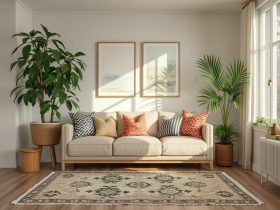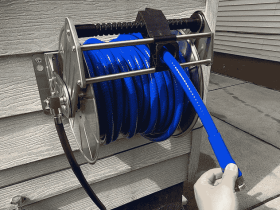Establishing a home office is an excellent way to create a dedicated workspace for productivity and focus. While this can be a great step for your business or career, it’s important to ensure that you’re taking the right steps in setting up your home office.
Without the right preparations, you could waste time and money on a space that isn’t optimized for your needs. That’s where we can help.
This blog post will discuss common mistakes to avoid when setting up a home office. By understanding these mistakes, you can ensure that you create a workspace that fits your needs and allows you to achieve your goals. Read on!
1. Not Having Enough Space
Some people try to squeeze their office into a corner of their living room or bedroom. Others use a portion of a closet or even an unused nook. This can be limiting in terms of the productivity you can achieve and the amount of stuff you can store.
If your home office is too cramped, you won’t be able to focus on your work adequately, and you’ll quickly become frustrated. Make sure you dedicate enough space to a proper home office.
2. Choosing The Right Colors
Utilizing design principles is the key to designing a productive and comfortable home office. While the color of your office might not seem important, it can significantly impact your work quality and mood. Consider your work requirements and end goal when selecting a color scheme.
For instance, if your work requires attention to detail and exceptional focus, use neutral colors like brown and taupe. As shades with a warm tone, neutral colors can improve concentration and eliminate distractions.
On the other hand, if you tend to get stressed quickly, you should consider shades of green and blue. Depending on the shade, such a color scheme can provide a calm ambiance, stability, and clarity of thought. Lastly, to stimulate creativity, choosing shades of yellow and a vibrant color scheme can do wonders.
3. Poor Lighting
Poor lighting can cause eye strain, fatigue, and headaches. Even natural lighting can be too bright or too low.
You want to make sure you have a balance of natural and artificial lighting. First, find a spot in your home with access to natural light. Use curtains and blinds to adjust the lighting according to your comfort. Additionally, invest in good task lighting fixtures such as an adjustable desk or floor lamps. You can also install dimmers to adjust the amount of light in the room.
Make sure to avoid glare and shadows by properly positioning your lights.
4. Smart Storage Solutions:
Storage solutions should be your priority when undertaking a home office project. Unlike an office where the management caters to your storage requirements, you are on your own at home. A specialized storage section in your office is key to distinguishing between personal and business operations.
Design a storage solution that complements the natural flow of your room and your job. This can optimize productivity by eliminating unnecessary steps and maintaining a clean and organized space.
Allocate spaces for specific items and organize them depending on their utility and functioning. For instance, if your work is wholly online, you probably do not need stationery and paper on your working desk.
5. Not Minimizing Distractions
Distractions can be one of the biggest enemies to productivity in a home office. While your home office should be where you can get work done, it shouldn’t be a distraction-prone zone.
Embrace the presence of distractions and use them to your advantage. Incorporate elements of your home office that will help you stay focused while allowing you to take breaks and refresh yourself.
This could be something like an office chair, a window with a view, or a whiteboard for brainstorming. The key is not to minimize distractions but use them to your advantage.
6. Not Having the Right Equipment
While it can be tempting to try to get away with working on a laptop, it is not ideal for long-term productivity. If you are serious about working from home, invest in a desk, ergonomic chair, other comfortable furniture, and a monitor.
A docking station can also help connect to additional peripherals such as a printer and external hard drive. Having the right equipment will help ensure your comfort and productivity over the long haul.
7. Not Investing in Ergonomics
Ergonomic furniture and accessories are designed to help you stay comfortable and reduce the risk of musculoskeletal injuries. It might seem like a minor issue, but it can significantly affect your productivity and overall health.
This can include investing in an ergonomic chair and desk and items like wrist rests, standing desks, and monitor stands. Don’t overspend, though; budgeting is important. This way, you can ensure you don’t drain your funds.
8. Personalization
Imagine working in an empty room with only office supplies and equipment. Feels suffocating, right? On the contrary, being surrounded by familiar items when working instills a sense of calm and peace.
Working in a space that compliments your preferences improves comfort and boosts motivation. Therefore, you must equip your home office with objects close to you and make you happy.
These can include pictures of your family or pets or a stress ball you can fidget when frustrated. In essence, anything that can ground when feeling demotivated or lost. However, avoid overstuffing to prevent distractions during office hours.
Final Word
Setting up a home office can be daunting. Finding a quiet space away at home from distractions is almost always impossible. However, you can design a proactive home office by understanding your needs and highlighting your strengths. Utilize the tips mentioned in this article to avoid the common pitfalls many people make.
We hope this article was helpful. If you have any questions or concerns, feel free to ask us in the comments!











Leave a Review